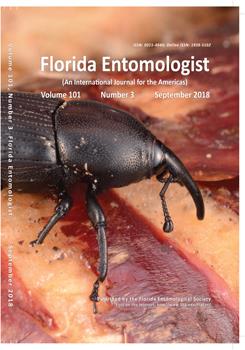The African-derived honey bee, Apis mellifera scutellata L. (Hymenoptera: Apidae), is reported to be somewhat resistant to the parasitic mite Varroa destructor Anderson & Trueman (Mesostigmata: Varroidae). However, this parasitic mite is considered a danger to honey bee colonies around the world and is reported to have negative effects in Brazil as well. Climate and altitude can affect the infestation levels of this mite. However, the impact of climate and altitude on Varroa infestation rates in Africanized honey bee is not well known; therefore, the goal of this study was to assess environmental effects on Varroa and honey bees in Brazil. We sampled 193 colonies across Bahia state during the Brazilian winter period, also collecting climatic information (rainfall and temperature) and altitude data for each apiary location. We used several statistical tests, such as Kruskal-Wallis, Pearson's correlation, and canonical discriminant analysis to evaluate the possible influence of the environmental variables on Varroa infestation levels. Varroa destructor was present in 94% of the samples, with the colonies showing infestation levels (proportion of infested bees per sample) ranging from 0 to > 20%. We found that weather and altitude in Neotropical areas have moderate degrees of influence on V. destructor infestation rates in Africanized honey bees. Colonies of Africanized honey bees located in areas with greater rainfall and lower altitude can have greater mite presence and infestation levels than in warmer, higher areas. Beekeepers in the lower, wetter areas should monitor their colonies regularly to detect the presence, and avoid increase, in mite infestation rates.
How to translate text using browser tools
1 September 2018
Can the Environment Influence Varroosis Infestation in Africanized Honey Bees in a Neotropical Region?
Maria Emilene Correia-Oliveira,
Carize da C. Mercês,
Raiane B. Mendes,
Vanessa S. L. das Neves,
Fabiane de L. Silva,
Carlos A. L. de Carvalho

Florida Entomologist
Vol. 101 • No. 3
September 2018
Vol. 101 • No. 3
September 2018
Apis mellifera
climate factors
ectoparasita de abelhas
fatores climáticos
honey bee ectoparasite
Varroa destructor




